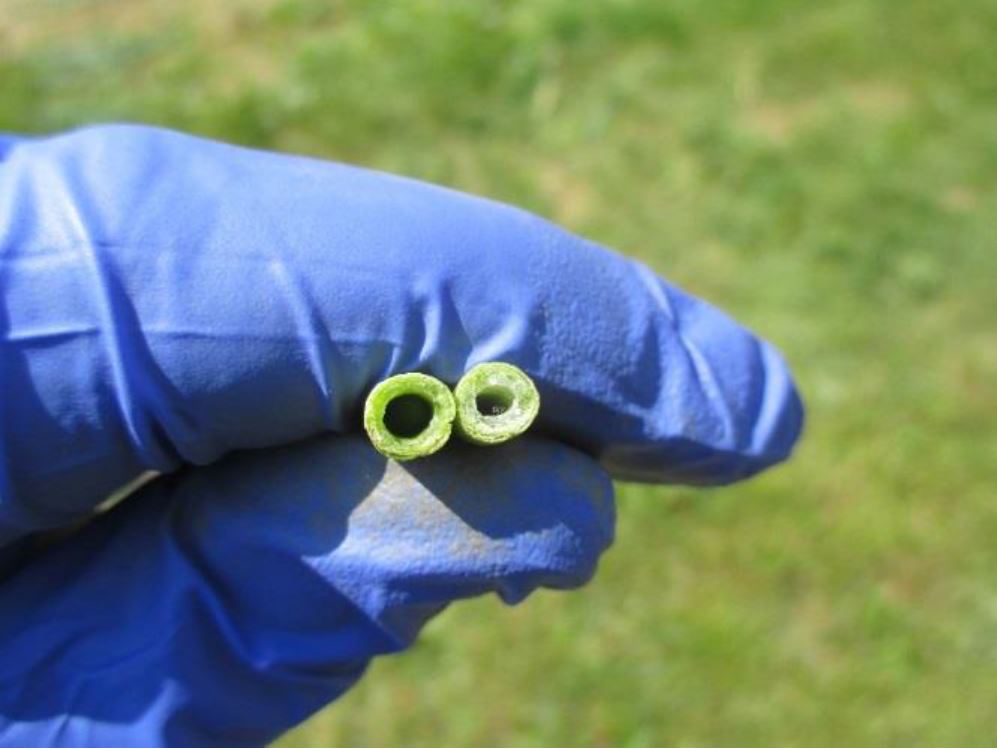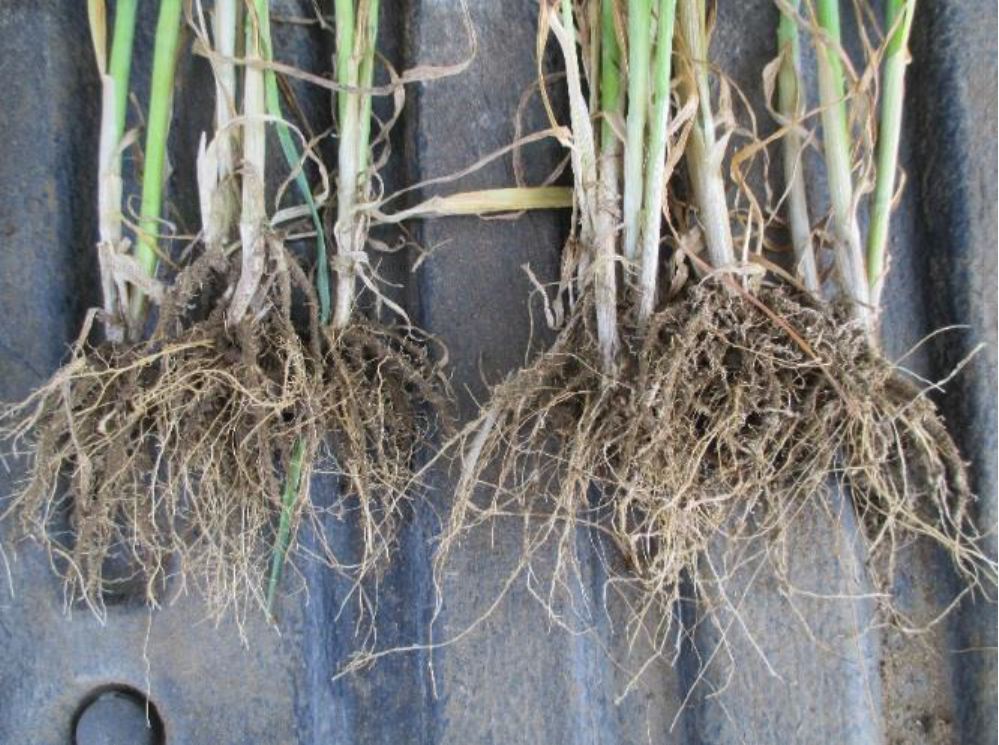A crystal ball would be a useful tool to help make PGR decisions, but growers can now get a degree of foresight into the best PGR programme for different varieties using a new web-based decision support tool from Syngenta. CPM meets the scientist behind the variety trials and takes a peek at ‘Inspire’.
Each variety’s characteristics will make it more or less susceptible to stem and/or root lodging.
By Lucy de la Pasture
Although the AHDB Recommended List produces lodging ratings for each variety, there’s no way of distinguishing their susceptibility to the different causes of lodging. Syngenta have developed a web-based decision support tool, ready for this spring, to help tailor PGR efforts at the right timings for each variety to best protect it from lodging. The unique capabilities of the tool, named InSpire, are based on years of variety-specific research which has been carried out at Harper Adams University.
Cereal lodging expert Dr Mitch Crook has been conducting the trials for Sygnenta for a number of years. Lodging is likely to be uppermost in many growers’ minds this spring after last season, he says, when a dry spring turned into a dodgy summer with lodging a common problem. “Witnessing yield and quality potential disappear as a result is something most growers would like to avoid and PGRs provide a useful insurance policy.

Moddus (right) can help thicken stem walls of varieties will weaker stem strengths.
“Modern varieties are high-yielding and the bigger biomasses they produce can increase the chance of lodging. Large, heavy ears are more difficult to support, and also exert greater leverage on the stem,” says Mitch.
“The most common form of lodging is root lodging, where the stems remain straight and unbuckled but rotation of the plant within the soil causes root/soil failure, causing the plant to lean over. This occurs when the ears are heavy and after rain when the soil is weak,” he says.
ADAS research also suggests that modern wheat varieties are inherently weaker rooting than older varieties, hence more susceptible to root lodging.
“Stem lodging is less common and involves the buckling of an internode. It often occurs after stems lean after some root lodging has already occurred, creating leverage on the stem,” he adds.
Mitch has been evaluating the physical characteristics of different varieties that affect their ‘standing power’ in the field.
“The factors I’ve been looking at are plant height, stem strength, anchorage strength and the shear strength of the soil, which can all can be measured in the field to compare varieties for lodging resistance,” he explains.
Plant height is the key factor when it comes to the toppling forces that cause lodging, with taller stems subject to more leverage when the crop sways. “Our tests show that wheat plants are very top-heavy, with a centre of gravity that’s 70% up the height of the stem when the ear is at its heaviest.

Early Moddus application (right) at T0 can help increase the root biomass of plants.
“A plant’s height affects the amount it will sway in the wind – with the degree of sway dependent on the cube of the crop’s height. Sway tends to be a more important factor influencing lodging in barley crops than in wheat,” he adds.
Plants get anchorage from their coronal roots and different varieties can have very different root architecture.
“Coronal roots are much more rigid that the thinner absorption roots responsible for nutrient and water uptake. They’re formed early in the plants life and become fully developed by the time crops reach GS39,” says Mitch.
This means there’s a crucial phase in the spring when the coronal roots are still developing, he says, and can be adversely affected by soil conditions, particularly after a wet winter and in a spring where soils are very wet for a prolonged period.
“Anchorage is less than stem strength in wheat when the soil is wet and depends on both root and soil properties, so root lodging is most likely when the soil is wet (and anchorage is lowest),” he notes.
Soil type also has a key role to play, with clay soils rapidly wetting-up after rainfall, weakening root anchorage and making lodging more likely.
“The bulk density of the soil will also have an effect on rooting, with a value of around 1.35 g/cm3 ideal. Any denser can result in rooting being restricted, and if less dense then the soil is too fluffy. Culturally rolling can be of benefit in the spring where the soil needs consolidating to assist root development and improve bulk density.”
Wheat stems are stronger than wheat roots when pushed over, according to the testing Mitch has done, which is why in wheat stem lodging is less likely. In barley there’s an increased chance of brackling or stem lodging occurring, he explains.
There’s also a natural variation between varieties, with some developing thicker stem walls than others. But it’s the taller varieties, which typically have extended intervals between nodes and tend to be weaker stemmed.
Measurements in the field using a lodging meter give a collective measurement of how all these four individual factors – height, stem strength, anchorage and soil strength – will stand up to the forces that cause lodging. Results have shown that very little force needs to be exerted on stems to cause a plant to fall over, with just 0.2-0.3 Nm typical.
“Because of theses physical properties, lodging is most likely during grain fill – when roots and stem won’t get any stronger but toppling forces are at their greatest, especially if they’re subjected to high winds and heavy rain,” he says.
But there are large seasonal variations in anchorage root strength and stem strength so it’s important to assess growth in the Spring to make crop management decisions. Assessing biomass or Green Area Index at GS25 is the ideal time to assess how susceptible a crop may be to lodging, with higher biomass crops strongly linked to higher potential yields, advises Mitch.
- For a more accurate picture of lodging risk, try the new InSpire on-line tool.




